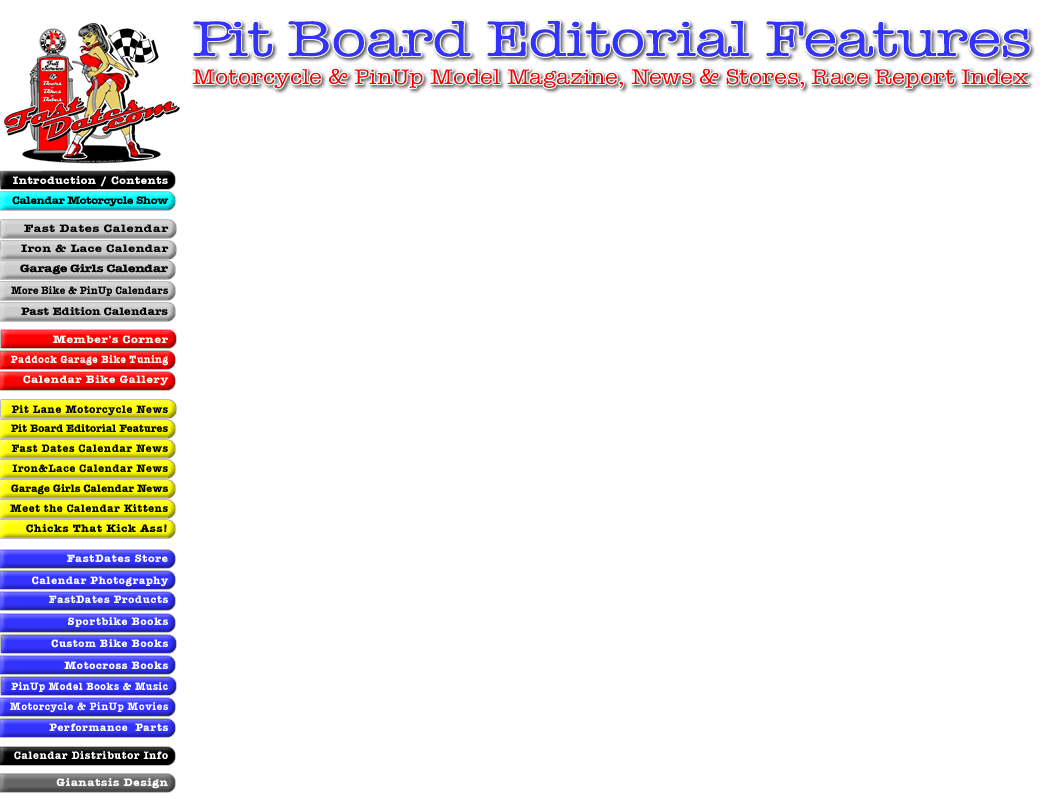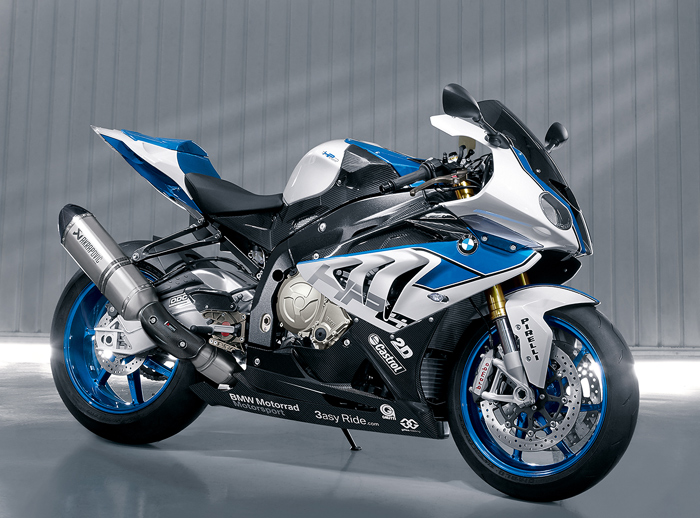
BMW HP4 S 1000RR Superbike World Premier & Feature Report
Click On Any Picture to Enlarge
August 1st, 2012 - With the BMW HP4, BMW Motorrad presents the lightest 4-cylinder supersports bike in the 1000cc class to date. Based on the BMW S 1000 RR - or RR for short - the new sports motorcycle has an output of 142 kW (193 hp) and weighs just 199 kilos including Race ABS and with a 90% full fuel tank (169 kg dry weight with Race ABS).
The new BMW HP4 sees its world premiere in 2012 and is a continuation of BMW Motorrad's HP model series founded in 2005. After the boxer models HP2 Enduro, HP2 Megamoto and HP2 Sport, the BMW HP4 is the first 4-cylinder motorcycle in the HP family. The HP label stands for high performance, and the HP4 once again embodies outstanding agility, power and riding dynamics. But it also reflects the use of extremely high-quality materials and intelligent technology, carefully conceived down to the last detail. In short, the HP4 stands for perfectly controllable power and sporty perfection.
BMW High Performance motorcycles are truly outstanding: exclusive and authentic, they will always remain relatively rare. This applies equally to the new BMW HP4. Each motorcycle is issued with its own HP4 serial number which is engraved indelibly in the upper fork bridge.
A genuine highlight: due to its extensive range of fittings and excellent set-up, the new HP4 is immediately ready for use on the race track ex works, requiring no elaborate modifications. But at the same time it offers great potential for dynamic riding on country roads. Still, the HP4 is entirely uncompromising, combining athletic flair and riding dynamics at the very highest level - to an even greater extent than the S 1000 RR.
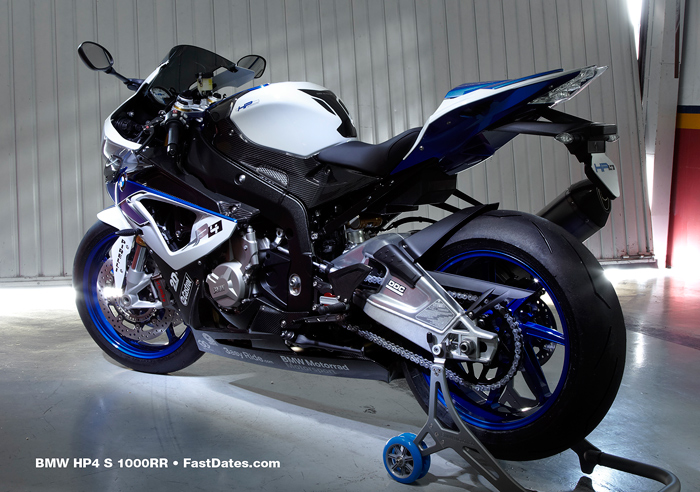
The new HP4 - exclusive performance based on the S 1000 RR.
Since its international press presentation in autumn 2009, the S 1000 RR has sped from one triumph to the next - and not just in motorcycle magazine comparative tests. This is clear evidence of the qualities and the consistency of the supersports concept. Fitted with Race ABS and Dynamic Traction Control (DTC), the RR set a new benchmark in this hotly competed and technologically highly sophisticated segment. But even the S 1000 RR left some room for improvement.
Technical innovations for enhanced sports performance.
The HP4 provides the homologation basis for the use of BMW motorcycles in motorcycle racing, especially in the superbike and superstock category. The new model features numerous technological innovations which highlight its orientation towards racing and the race track. The standard passenger seat cover ensures the monoposto look so characteristic of the race track. But for riders who would like to travel with a passenger, BMW Motorrad also offers a passenger package as an ex works option. In addition to the passenger seat, this includes the passenger footrest system.
Dynamic Damping Control DDC - a world first in serial motorcycles construction.
The new HP4 reflects its status as a high-performance motorcycle in terms of its suspension system with a world first for serial production motorcycles: it is fitted as standard with Dynamic Damping Control DDC. This system allows dynamic damping adaptation of the upside-down fork and spring strut to the specific situation on the road. The damping is adapted to the current manoeuvre or road surface by means of sensor-supplied parameters via electrically controlled regulation valves. In this way, the HP4 offers optimum damping in every situation, handling long and short shocks virtually perfectly so as to provide maximum traction and safety.
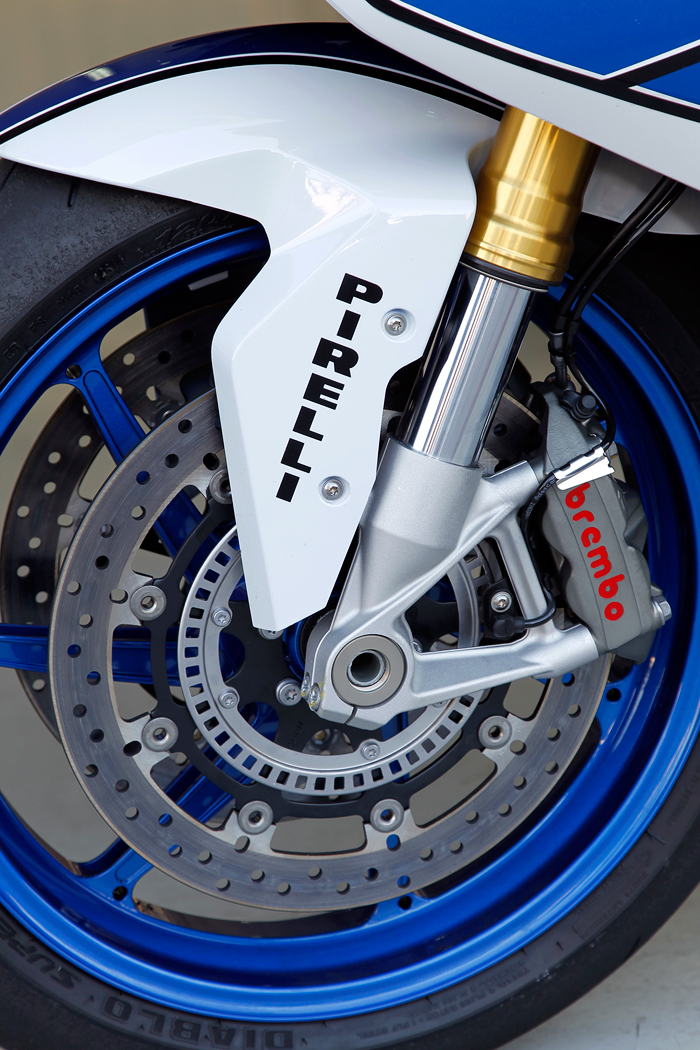
Race ABS with IDM setting – for top brake performance on the race track.
BMW Motorrad was the first motorcycle manufacturer in the world to fit its machines with the antilock system ABS over 20 years ago, setting a milestone in active motorcycling safety at the time. Today all BMW motorcycles throughout the world are fitted with ABS as standard. With the presentation of the S 1000 RR in 2009, BMW Motorrad added another milestone in brake technology when it launched Race ABS, specially tailored to the supersports needs of the RR.
BMW Motorrad now takes another consistent step forward in the HP4. The system has been further refined and in particular adapted for use on the race track. As before, it has four different modes for wet surface ("Rain"), road ("Sport"), race track with supersports tyres ("Race") and race track with slicks ("Slick").
In the modes "Rain", "Sport" and "Race", the Race ABS operates on a part integral basis, in other words the rear wheel is automatically braked when the front wheel brake is activated. This ensures that the motorcycle remains considerably more stable in the braking phase, permitting very short braking distances.
In "Slick" mode, the Race ABS setting in the HP4 is now at maximum deceleration, giving the rider transparent feedback on the level of grip at all times. The new IDM setting - developed during the German Superbike Championship - offers refined control impulses and allows maximum deceleration at the grip limit of the tyres. In this mode, both the rear wheel lift detection and ABS function are deactivated for the rear wheel, allowing skilled riders to control the HP4 using the rear wheel brake and perform brake drifts. |
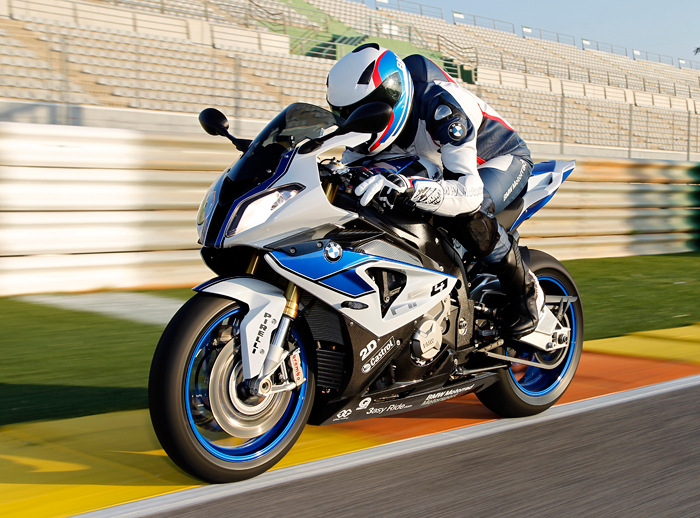
New rear tyre size 200/55 ZR 17. Adapted and adjustable Dynamic Traction Control in "Slick" mode.
The HP4 now features a rear wheel in the new 200/55 ZR 17 format. Dynamic Traction Control DTC - familiar from the RR - has been optimised for supersports use in the HP4. While riding in “Slick” mode the DTC can be adapted to changing grip levels by using the shift paddle "Slick +/- DTC" on the left-hand control panel on the handlebars. This now gives the rider the option to respond flexibly to environmental conditions such as air and asphalt temperature and changes in tyre grip and road surface states.
The adjustment range is from –7 via 0 to +7. Level 0 corresponds to the "Slick" mode setting familiar from the RR, while - 7 represents a significant reduction in control intervention. This allows much more powerful slides to be performed, for example. By contrast, the DTC system intervenes much more perceptibly at +7.
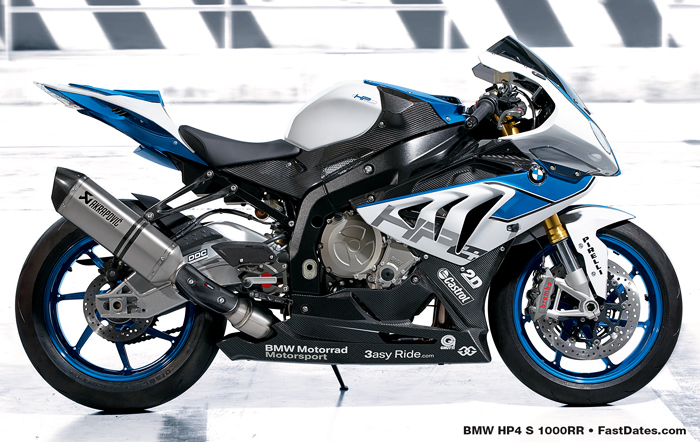
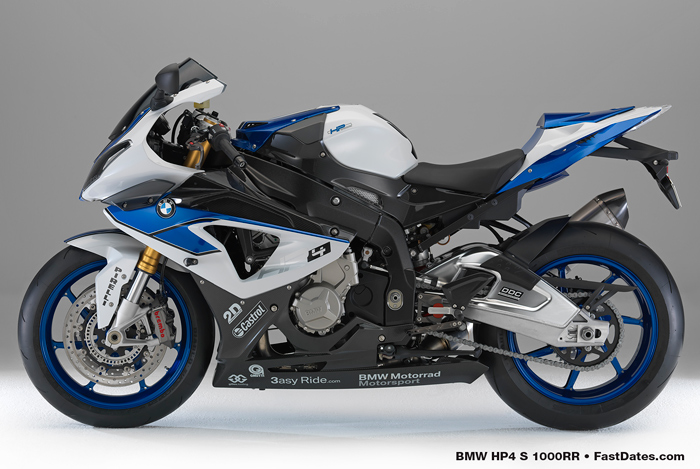
Launch Control for optimum acceleration, perfect starts in "Slick" mode, adapted wheelie detection.
A high level of skill is required to effectively turn power into forward thrust when accelerating from standing - as when starting a race for example - especially in the case of a high-performance supersports bike. For this reason, the HP4 is the first BMW motorcycle to offer a so-called Launch Control function which provides active set-off support for the rider in "Slick" mode.
In order to ensure full acceleration from standing, Launch Control limits engine torque so as to provide the maximum torque transferable from the rear wheel whenever the front wheel is under no throttle. This means the rider has to focus much less on the throttle because he is controlling acceleration solely using the clutch. He can leave the throttle virtually entirely open. During the actual starting process engine speed is limited to 8,000 rpm; when the 60 km/h mark is passed this limit no longer applies. If the rider shifts into second gear, the engine torque is automatically corrected to allow for the change in gear ratio, once again transferring maximum torque to the rear wheel.
Launch Control is deactivated when third gear is engaged, when the machine reaches a banking angle of over 30 degrees or when the rider switches into a different DTC mode. The function is also deactivated if the ignition is switched off or if the engine stalls.
The HP4 also supports the rider when Launch Control is activated by means of the adapted wheelie detection function, which reduces engine torque as soon as any lift is detected in the front wheel. If Launch Control is not activated, wheelies are permitted in "Race" mode at a banking angle of under 25 degrees and in "Slick" mode at less than 30 degrees.
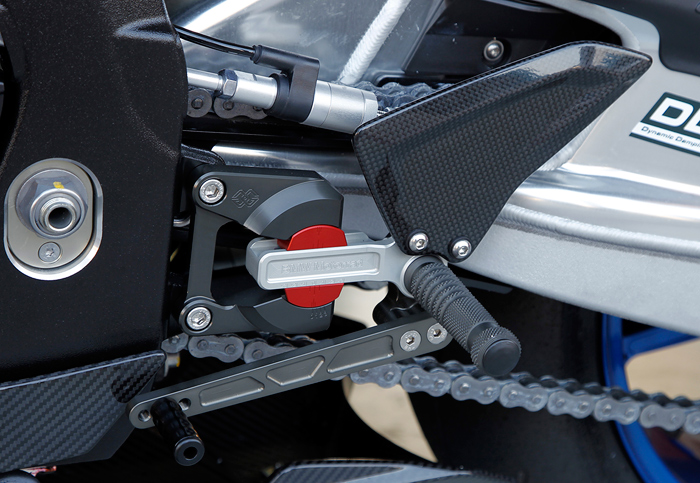
Shift assistant for upshifting with virtually no interruption of tractive power.
The shift assistant is a standard feature of the HP4. It enables the rider to shift up a gear without activating the clutch and therefore virtually without any interruption of tractive force. Here the ignition and fuel feed are interrupted for a fraction of a second. The aim is to save valuable lap time when accelerating.
Weight reduction with forged wheels, lighter sprocket carrier, titanium exhaust, lighter battery.
New finely wrought 7-spoke wheels in forged light alloy and a new, lighter sprocket carrier give the HP4 a weight reduction of 2.4 kg as compared to the RR.
The exhaust system is made entirely of titanium and saves as much as 4.5 kilograms as compared to the RR, thereby contributing to the HP4's enhanced handling qualities. The new exhaust system has an interference pipe between cylinders two and three, a controlled acoustic valve and a closed-loop catalytic converter. It has been possible to optimise the torque curve thanks to the new exhaust system, with the engine application adapted accordingly.
Sharpened engine set-up and more torque in the mid-range.
The new HP4 is fitted with the water-cooled 4-cylinder in-line engine of the S 1000 RR with a peak output of 142 kW (193 hp) at 13,000 rpm and a maximum engine speed of 14,200 rpm. As in the RR, its maximum torque of 112 Nm goes on stream at 9,750 rpm. The torque has been perceptibly increased in the 6,000 rpm to 9,750 rpm range. In "Rain" mode there is now a smoother output and torque curve available between 2,500 rpm and 8,000 rpm.
Unlike the RR, the 4-cylinder in-line engine in the HP4 provides the full output of 142 kW (193 bhp) at 13,000 rpm in all modes - "Rain", "Sport", "Race" and "Slick" - with an identical throttle curve and thus the same response, making it perfect for use on the race track.
Supersports fittings for sporty riders.
The HP4 has numerous special features to meet the needs of sports and racing riders. For example, the instrument cluster not only has a newly designed dial face with HP4 inscription but also provides an extended range of information and functions. The information display now shows the DDC set-up menus as well as the figures for DTC fine adjustment and Launch Control activation.
In visual terms, too, the new HP4 is consistently in line with supersports aspirations for the race track and for dynamic country road riding. In addition to the monoposto look, there is a dual-section engine spoiler - elongated as compared to the RR - and a tinted windshield, both of which highlight the increased dynamic performance of the HP4. The small, light LED turn indicators are discreetly integrated and the laser-engraved HP4 logo with serial number on the upper fork bridge underscores the bike's exclusive character. An elaborate multiple colour paint finish in Racing blue metallic/Light white creates an appropriate racing-orientated appearance.
HP4 with Competition Package – top-level exclusive flair due to use of the very finest materials.
For anyone who wants even more than the functional sophistication and extreme riding dynamics of the HP4, the HP4 with Competition Package is an especially exclusive version of the motorcycle. Refined HP carbon parts including a long, closed HP engine spoiler in carbon, an adjustable HP rider footrest system, folding HP brake and clutch levers, wheels finished in Racing blue metallic and a sponsor sticker kit provide additional enhancement of the new HP4.
|
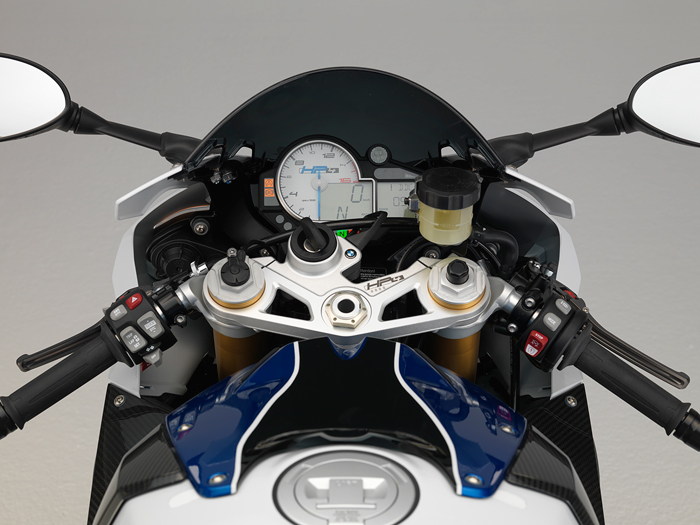
Technology and Design
Dynamic Damping Control DDC – dynamic damping adjustment to match the given situation.
Dynamic Damping Control DDC, fitted in the HP4 as a world premiere in a road-legal motorcycle, goes one step further. This system involves dynamic adaptation of compression and rebound stage damping to suit the given situation, for example fast changes of direction in chicanes or uneven stretches of road. The semi-active suspension system reacts automatically to manoeuvres such as braking, accelerating and cornering on various road surfaces and sets the correct level of damping by means of electrically actuated damping valves. Unlike ESA II it is not characteristic lines but characteristic maps which ensure optimum damper adjustment within a defined range.
The basic settings of Dynamic Damping Control DDC are linked to the modes "Rain", "Sport", "Race" and "Slick", which can be conveniently selected by the rider at the press of a button. The set-up menu in the instrument cluster allows the damping to be adapted more closely to the rider's preferences. As with a mechanical setting, it is possible to apply a softer (-7) or a tighter (+7) set-up. The adjustment of the spring mount (spring preload) is carried out by hand using a 17 mm wrench.
In the "Rain" and "Sport" mode, the DDC set-up focus is on a full, pleasant damping as preferred when riding on country roads or on poor to well-asphalted roads. In the "Race" and "Slick" modes, however, the DDC set-up is geared more towards performance, supporting a very sporty riding style on the race track in particular. Damper set-up is tight and gives the rider crystal-clear feedback at all times.
The great benefit of DDC lies in the fact that it is dynamic, allowing damping set-up to be adjusted while riding. During development of the DDC, BMW Motorrad also benefited from synergies with BMW automobiles, where this technology has been used in serial production for some time. The challenge lay in adapting it to motorcycle physics and in integrating the appropriate control systems.
Damping adjustment within the millisecond range is effected by means of an electrically controlled valve with a piston ring being altered, thereby adjusting the through-flow cross-section for the damper oil. This means that the HP4 provides the optimum setting for damper rebound and compression stage in every situation. Compromises in terms of suspension set-up are a thing of the past. DDC provides maximum traction for optimum deployment of engine power during acceleration.
Before setting off when the ignition is switched on, the system check is activated first, initiating the flow of information from the engine control system, sensor box and spring travel sensor to the Dynamic Damping Control DDC. The DDC control unit processes a large amount of information relevant to driving dynamics such as spring travel, road speed and throttle valve position. The sensor box also supplies information to DTC on the banking angle of the motorcycle and other parameters.
The two fork legs of the DDC upside-down fork are identical in structure - the difference lies in the interior of the fixed fork tube and slider tube. The setting mechanism for the 15 mm (RR 20 mm) variable spring mount (spring preload) is in the right-hand fork leg, for example. The valve responsible for the dynamic build-up of damping power is housed in the damper cartridge of the left-hand fork leg, together with its electrical connection. The balancing chamber in the lower section of the left-hand fork leg is subjected to increased gas pressure and absorbs the displaced volume of oil from the damper piston rod in the closed cartridge.
As standard, the telescopic fork damping is controlled on an integrated basis and not separately for the rebound and compression stage. However, the wiring harness of the HP4 is prepared with a connection for a linear spring travel sensor at the fork. The control unit detects when the sensor is connected and extends the menu in the instrument cluster to include a separate rebound and compression stage setting. This sensor is available on the accessory market.
The new DDC spring strut is bolted onto the frame by means of a light alloy insert, the so-called sliding block. The motorcycle is supplied with a 0 mm insert. The two inserts included (1.5 and 3 mm) allow the rear of the vehicle to be raised and the suspension geometry to be quickly adapted to prevailing road conditions and the rider's individual preferences. When using a different sliding block, the rear spring travel sensor has to be calibrated accordingly using the set-up menu. At the front the adjustment is made in the usual manner by means of the fork bridge clamp.

HP4 Specifications
EngineCapacity cc 999
Bore/stroke mm 80/49.7
Output kW/hp 142/193 at engine speed rpm 13,000
Torque Nm 112 at engine speed rpm 9,750
Engine Type
Water-cooled in-line 4-cylinder engine
Compression/fuel 13 : 1/ premium unleaded (95 RON)
Valve actuation
DOHC (double overhead camshaft) valve operation via individual rocker arms
Valves per cylinder 4
Ø Intake/outlet mm 33.5/27.2
Ø Throttle valve mm 48
Carburetion BMS-KP
Emission control Closed-loop catalytic converter
Electrical system Alternator W 350
Battery V/Ah 12/7, maintenance free (with theft alarm system 12/10)
Headlight W Low beam 1 x H 7/55 W High beam 1 x H 7/55 W
Starter kW 0.8
Power transmission and gearbox
Clutch Multiple disc antihopping clutch in oil bath, mechanically operated
Gearbox Constant mesh 6-speed gearbox
Primary ratio 1 : 1.652
Gear transmission ratios I 1 : 2.6471, II 1 : 2.091,III 1 : 1.727, IV 1 : 1.500, V 1 : 1.360, VI 1 : 1.261
Rear wheel drive Chain
Transmission ratio 1 : 2.647
Chassis
Frame construction typeBridge frame, aluminium
Front wheel suspension USD fork with DDC, fixed fork tube diameter 46 mm damping electronically adjustable, spring preload adjustable
Rear wheel suspension Aluminium double-sided swing arm with DDC central spring strut, compression and rebound stage electronically adjustable, spring preload hydraulically adjustable
Spring travel front/rear mm 120/130
Wheel castor mm 98.5
Wheelbase mm 1 422.7
Steering head angle 66 / 23°
Brakes
Front Double disc brake, 9x floating Ø 320 mm, radial monoblock 4-piston fixed caliper
Rear Single disc brake, Ø 220 mm, single piston floating caliper ABS
BMW Motorrad Race ABS (partially integral, disengageable)
DTC
BMW Motorrad DTC (disengageable)
Wheels
Forged wheelsFront3.50 x 17", Rear 6.00 x 17"
Tyres Front 120/70 ZR17, Rear 200/55 ZR17
Dimensions and weights
Total length mm 2,056, Total width incl. mirrors mm 826
Seat height mm 820
DIN unladen weight, road ready, 90% fuelled kg 199 (with Race ABS), Permitted total weight kg 405
Fuel tank capacity
17.5 liters
Dry weight kg 169 (with Race ABS)
Performance figures
Acceleration 0–100 km/h s 2.9, 0–1000 m s 17.9
Max. speed km/h > 200
BMW Index • S1000RR Page One • S1000RR Page Two • HP4 S1000RR Page Three
Back
to New Bike Index • Pit Board Index • Pit
Lane News
|








